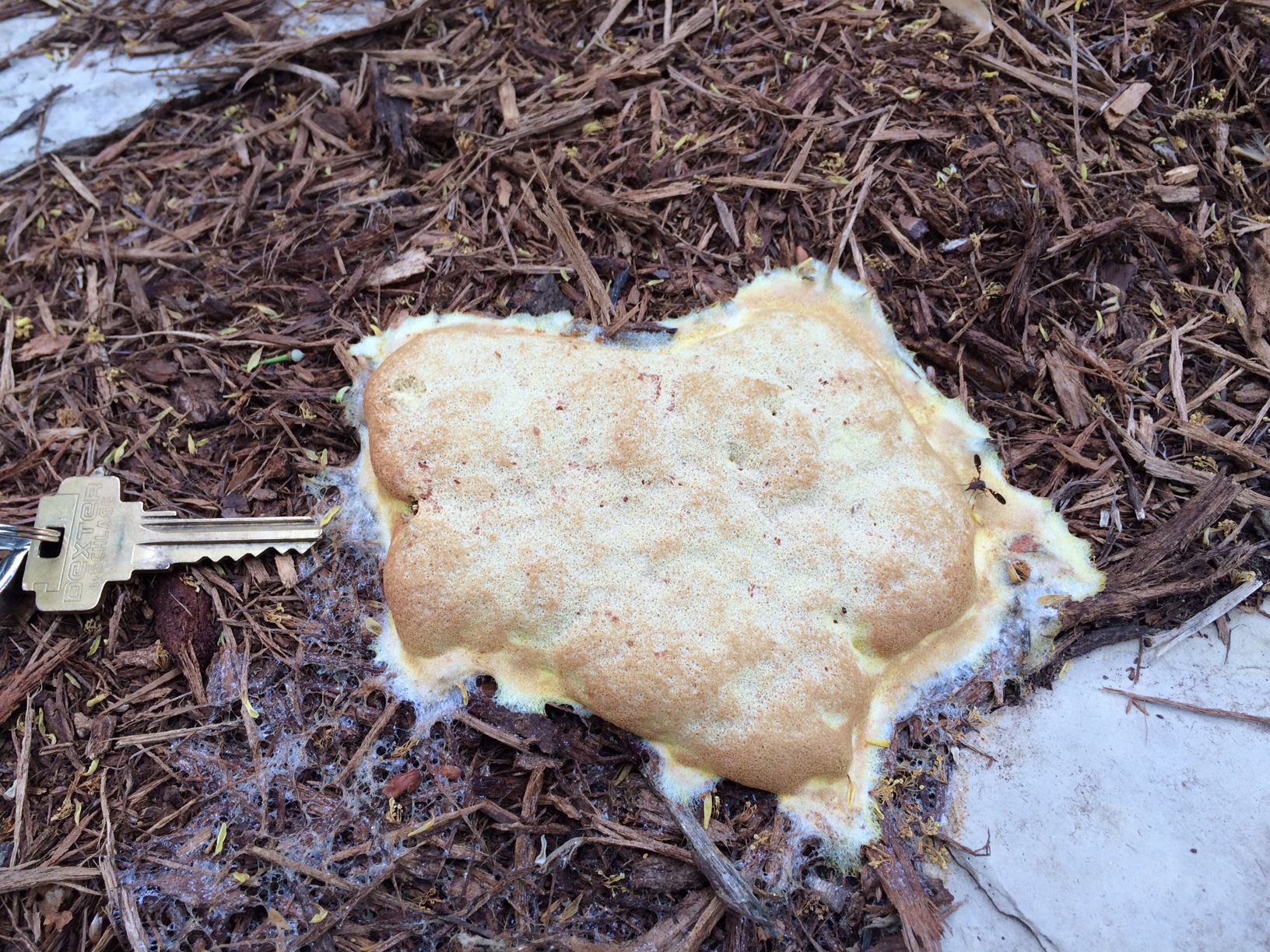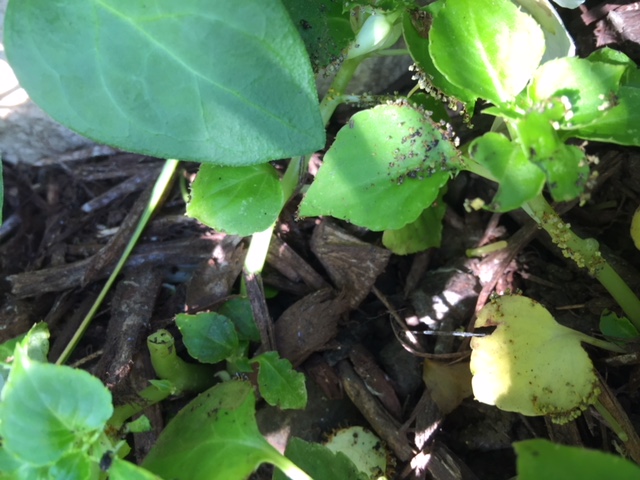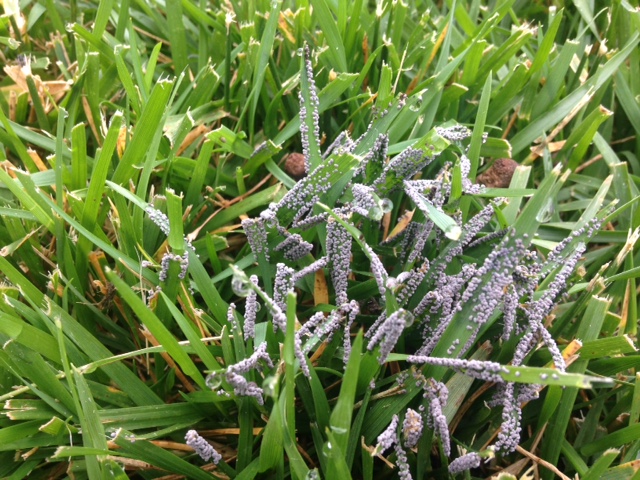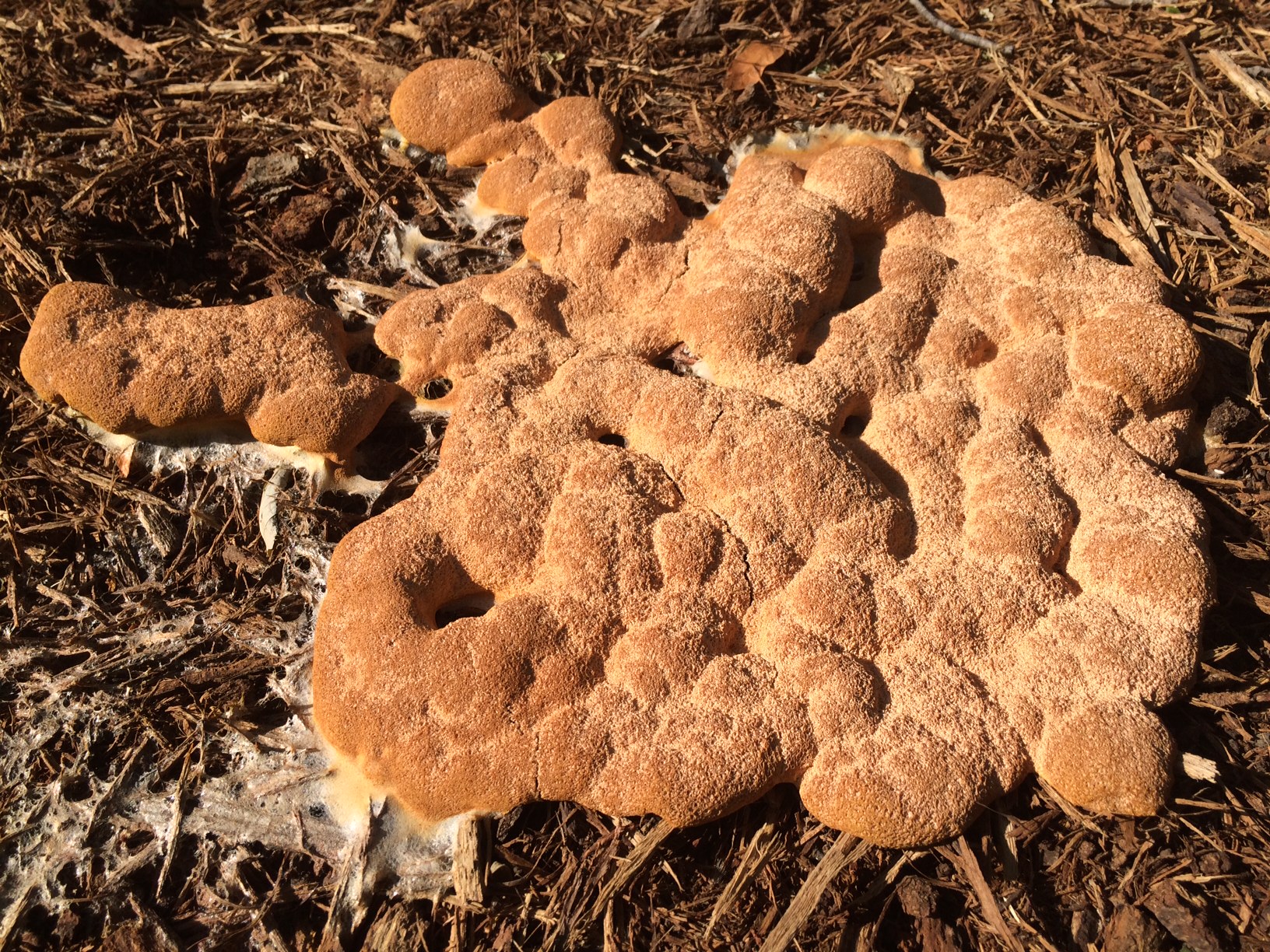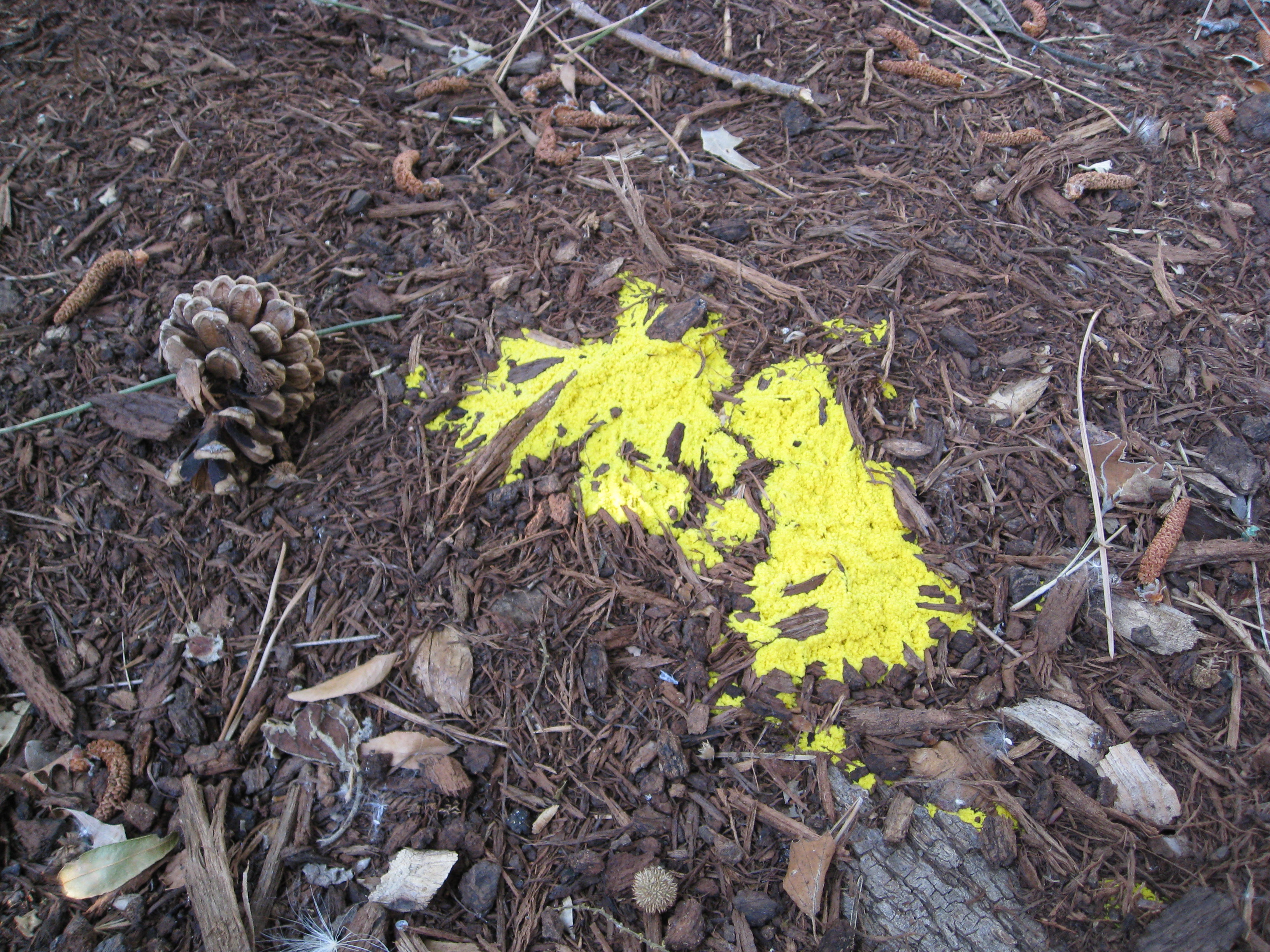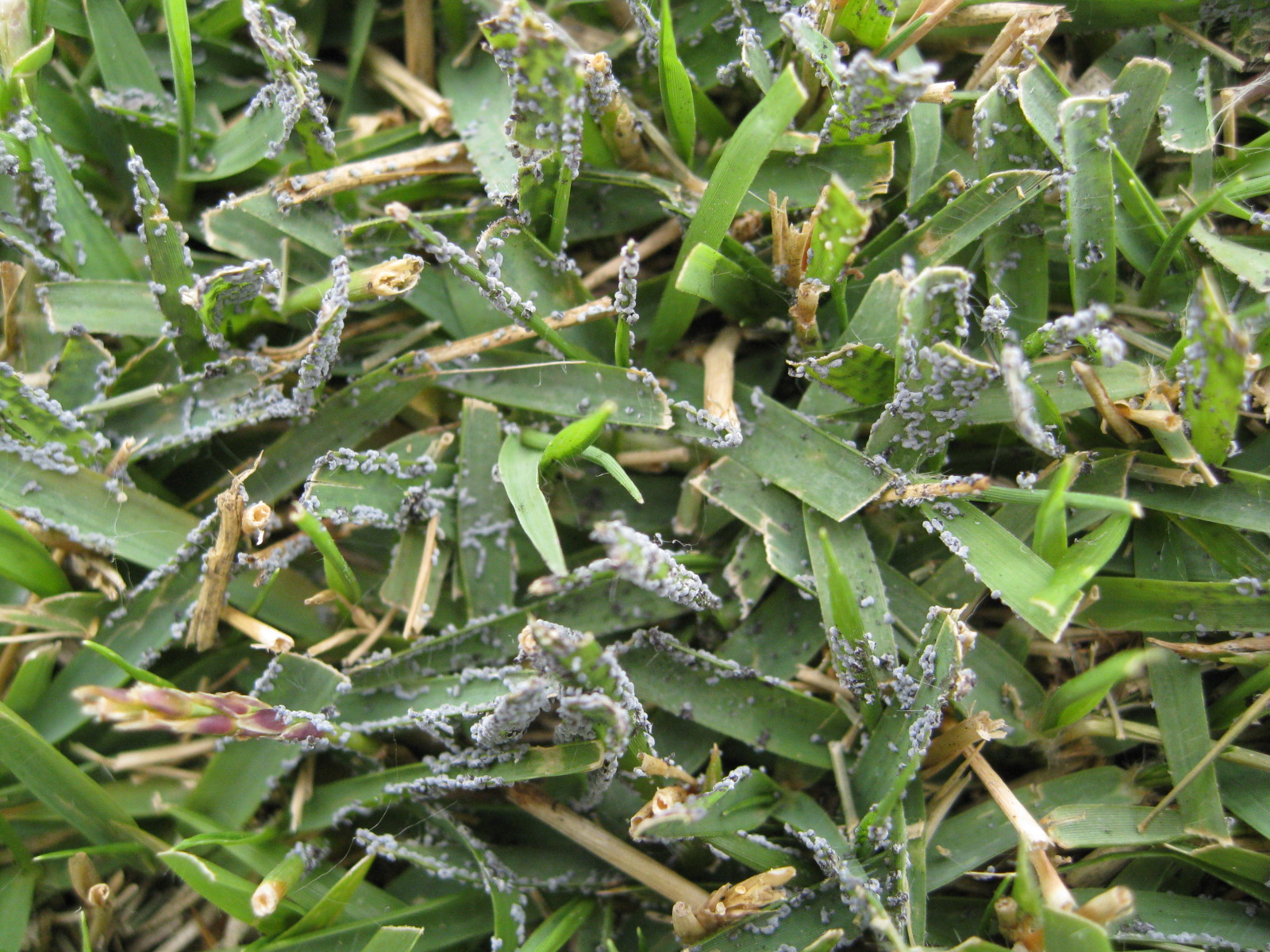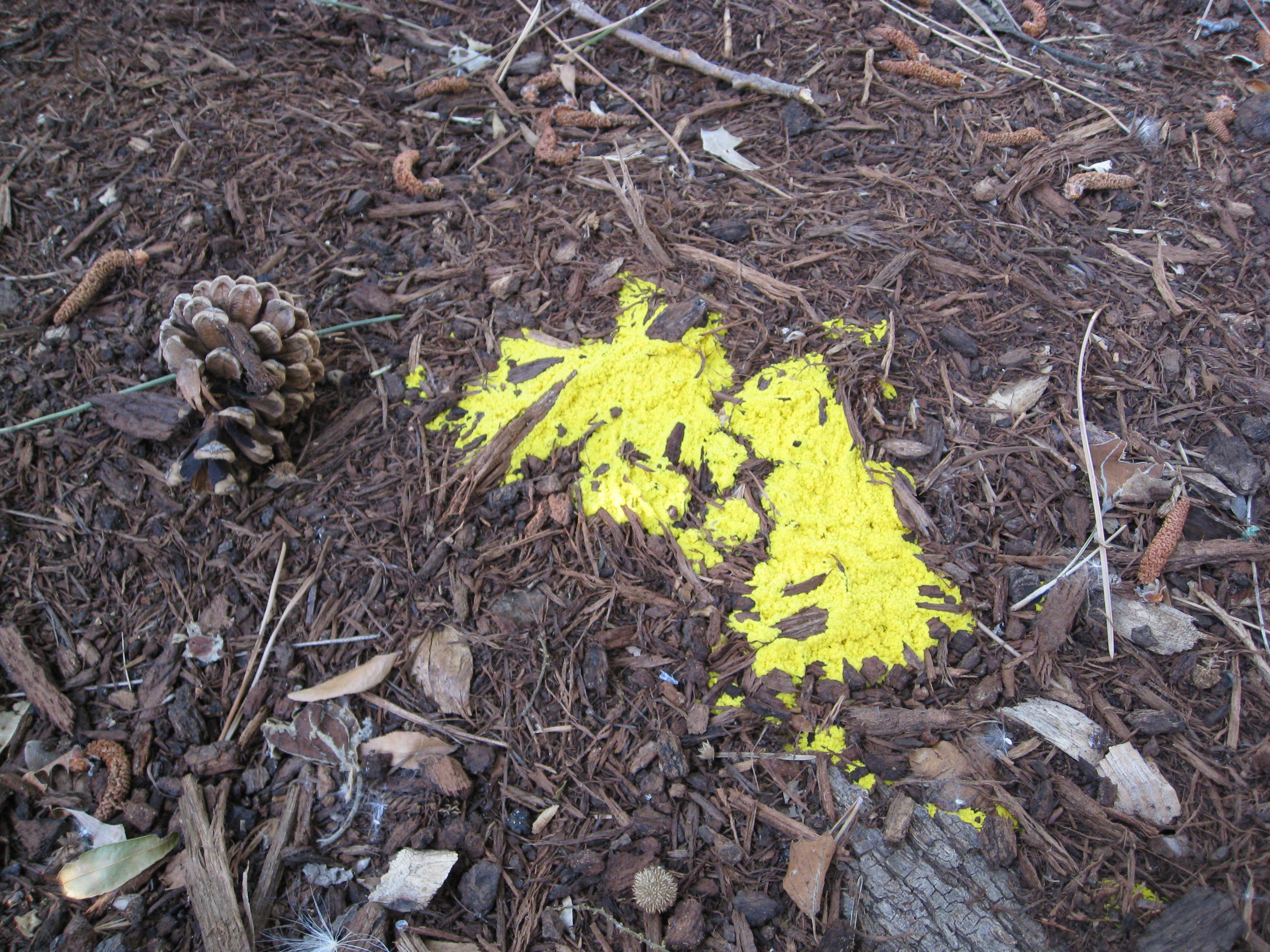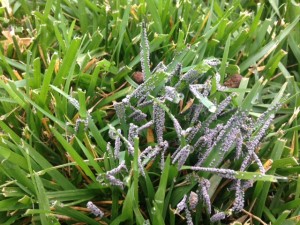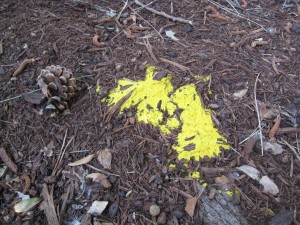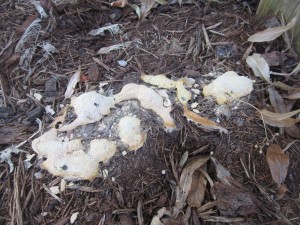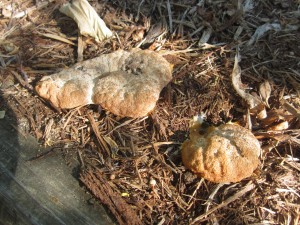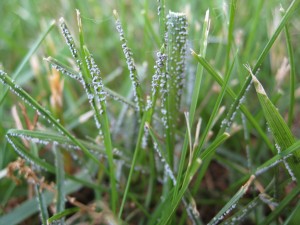(Megan Kennelly, KSU Plant Pathology)
Look what showed up in my mulch yesterday morning?
Hey, what’s that stuff? Slime molds! They can look pretty alarming, and they can pop up seemingly overnight. They are pretty harmless, and you can read more HERE and if you would like a fascinating glimpse into how these organisms work there is a short video clip HERE called “Are you smarter than a slime mold?”
Here is another version of slime mold – these photos were submitted to me this morning over email. Look closely and you’ll see little gray blobs up on stalks:
And, to round things out, here are a few from last year:
(Courtesy Ron Reese)
